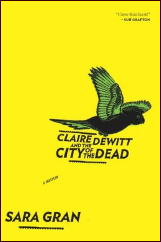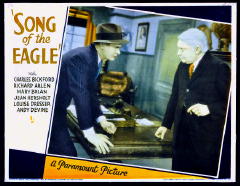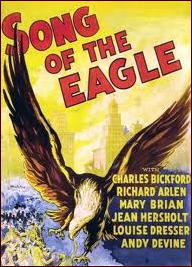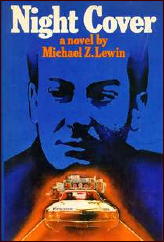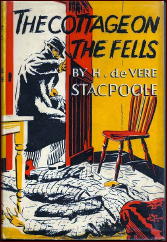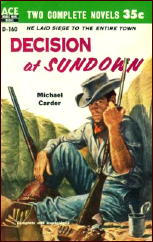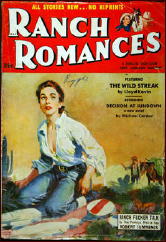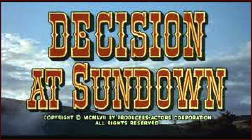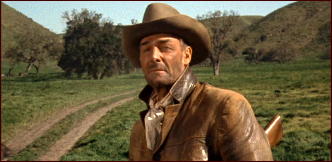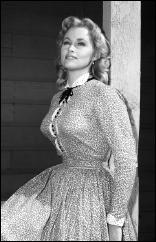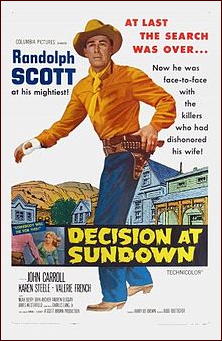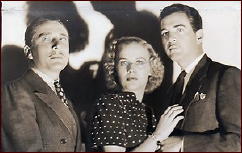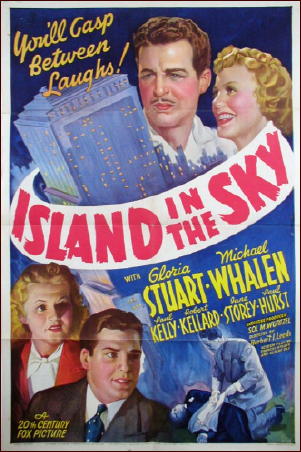REVIEWED BY MICHAEL SHONK:
SHELL GAME. CBS, 1987; Warner Brothers Television. Created by Carla Jean Wagner. Cast: Margot Kidder as Dinah aka Jennie Jerome, James Read as Reilly aka John Reid, Marg Helgenberger as Natalie Thayer, Chip Zien as Bert Luna, Rod McCary as Bill Bauer, and (added after pilot) Fred McCarren as Vince Vanneman. Theme by Michel Colombier.
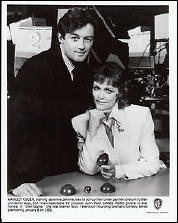
Pilot: 60 minutes. Executive Producer: Michael Rappaport. Produced by Lou Antonio. Coordinating Producer was John Ziffren.
Weekly Series: 60 minutes. A Lou-Step Production & Hey Keed Production in association with Warner Brothers Television. Executive Producers: Nick Thiel and Paul Picard. Supervising Producer: Alex Beaton. Produced by John Wirth
A link to the opening credits can be found here.
There were two con artists, husband Reilly and wife Dinah. Reilly decided to go straight but Dinah refused. He left her and they were divorced.
The show opens with Dinah on the run from a mark and his minions who want her dead. The chase takes her to Santa Ana California where she discovers her ex-husband had settled down and gone straight. Reilly was now John Reid (The Lone Ranger), producer of “Solutions,†a TV consumer action show for KJME-TV. Dinah, now Jennie Jerome (Winston Churchill’s mom), ditches the bad guys and becomes the new associate producer of “Solutions†before John can stop it. Of course, no one knows the truth about John aka Reilly, former conman and husband. Jennie wants John to return to their former life together, but he refuses.
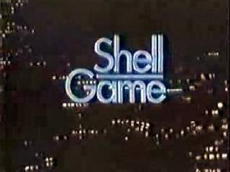
Margot Kidder (SUPERMAN) as adventure loving Jennie/Dinah and James Read (REMINGTON STEELE) as John/Reilly were wonderful together, and the show, never aiming higher than mindless entertainment, took off whenever the two pulled a con so the TV show “Solutions,†could expose the bad guys.
Sadly, the series wasn’t satisfied to stop there. There was the supporting cast: stereotypical station manager Vince, the idiot self-centered co-host Bill and the yes-man Bert, all adding annoyingly pointless comedy relief.
Then there was “Solutions†co-host Natalie who was the rich beautiful daughter of the station’s owner, and John Reid’s current lover. Marg Helgenberger gave Natalie a likable naïve vulnerability that often made us feel sorry for her and her fate as the losing side of the romantic triangle. Worse, the chemistry so strong between Read and Kidder did not exist between Read and Helgenberger.
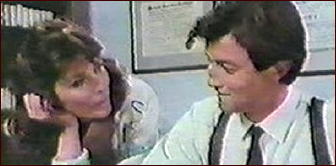
Believability is always a problem with shows such as SHELL GAME, especially one as poorly produced as this one. The mysteries, if there were any, were weak. The scripts were filled with action that made no sense. The interior sets were cheap looking. The soundtrack lacked a constant sound to give the series its own audio identity. Nothing in this series worked except when Kidder and Read as Jennie and John were running a con to catch the bad guys.
But even if SHELL GAME had been HART TO HART with con artists, the series was doomed airing opposite NBC’s top rated THE COSBY SHOW and FAMILY TIES.
EPISODE INDEX:
“Pilot†(January 8, 1987) Written by Carla Jean Wagner Directed by Lou Antonio. GUEST CAST: William Trayler, Jim Antonio, and Castulo Guerra *** This sixty minute pilot offers some screwball fun as on the run con artist “Jennie†helps her gone straight ex-husband and ex-partner save a potato chip Heiress.
Ratings: SHELL GAME – 9.7 versus ABC’s OUR WORLD – 6.8 and NBC’s COSBY SHOW – 36.6 and FAMILY TIES – 36.4
“Norman’s Parking Ticket†(January 15, 1987) Written by Gerald Sanoff Directed by Harry Harris GUEST CAST: Walter Olkewicz, Jordan Charney and Richard Minchenberg *** A man comes to “Solutions†for help to fight a parking ticket unaware the ticket will tie his car to a murder scene. Meanwhile, Jennie is being nice to Natalie so she can crash a high-stakes poker game to raise money to pay for a wedding anniversary gift to Reilly.
Ratings:: SHELL GAME – 8.9 versus ABC’s OUR WORLD – 6.9 and NBC’s COSBY SHOW – 38.6 and FAMILY TIES – 36.6
“Old Team†(1/22/87) Teleplay by Nick Thiel Story by Kerry Ehrin Directed by Paul Krasny GUEST CAST: Gene Barry, Brynn Thayer and Robert Hanley. *** “Solutions†is following Santa Ana’s police Bunco squad during an average day when offered a chance to join in on a bust. John realizes Jennie’s father is behind the con about to be busted, and that Dad had gotten Jennie to join in the con.
Ratings:: SHELL GAME – 9.3 versus ABC’s OUR WORLD -7.7 and NBC’s COSBY SHOW – 41.3 and FAMILY TIES -39.2
“The Upstairs Gardener†(1/29/87) Written by John Wirth Directed by Chris Leitch GUEST CAST: Michael MacRae, Vincent Schiavelli, Benicio Del Toro and Mary Woronov. *** A thieving husband kills his rich wife and frames her lover, the young gardener. “Solutions†is doing a story on the jail when they meet the young man’s mother who convinces them to prove her son innocent.
Ratings: SHELL GAME – 9.8 versus ABC’s OUR WORLD – 6.8 and NBC’s COSBY SHOW – 36.1 and FAMILY TIES – 36
“Pai Gow†(2/8/87) Teleplay by John Wells Story by Michael Fink Directed by Harry Mastrogeorge. GUEST CAST: James Pax, Clyde Kusatsu and Dustin Nguven *** A man comes to “Solutions†to help him prove he was not driving drunk when he hit and killed a man. The story takes us deep into Santa Ana’s Chinatown run by the evil “Tiger†who uses his gambling den to pass counterfeit money.
Ratings:: SHELL GAME – 8.8 versus ABC’s OUR WORLD – 7.2 and NBC’s COSBY SHOW – 37.6 and FAMILY TIES – 36.4
“Dead Wrong†(2/12/87) Written by John Wirth and John Wells. Directed by Chris Leitch. GUEST CAST: Michael Greene, George Dickerson, and Ora Rubens. *** A beautiful woman claiming to be a man’s wife cons Bert and Bill to do a report about the man committing arson. The police arrest the man, and the real wife decides to sue the station.
Ratings:: SHELL GAME – 8 versus ABC’s OUR WORLD – 6.8 and NBC’s COSBY SHOW – 36.1 and FAMILY TIES – 36.
For three weeks starting June 3rd, long after it was cancelled, an episode of SHELL GAME was rerun in MAGNUM PI place on Wednesday at 9pm where each week it finished last up against reruns of ABC’s MACGYVER and NBC’S sitcoms FACTS OF LIFE, NIGHT COURT and NOTHING IN COMMON.
SHELL GAME was a typical fun-dumb romantic comedy mystery with all the substance of cotton candy. While Read and Kidder were on the con the series had a screwball charm, but it wasn’t enough to overcome the many flaws of the series, let alone its suicidal timeslot.
